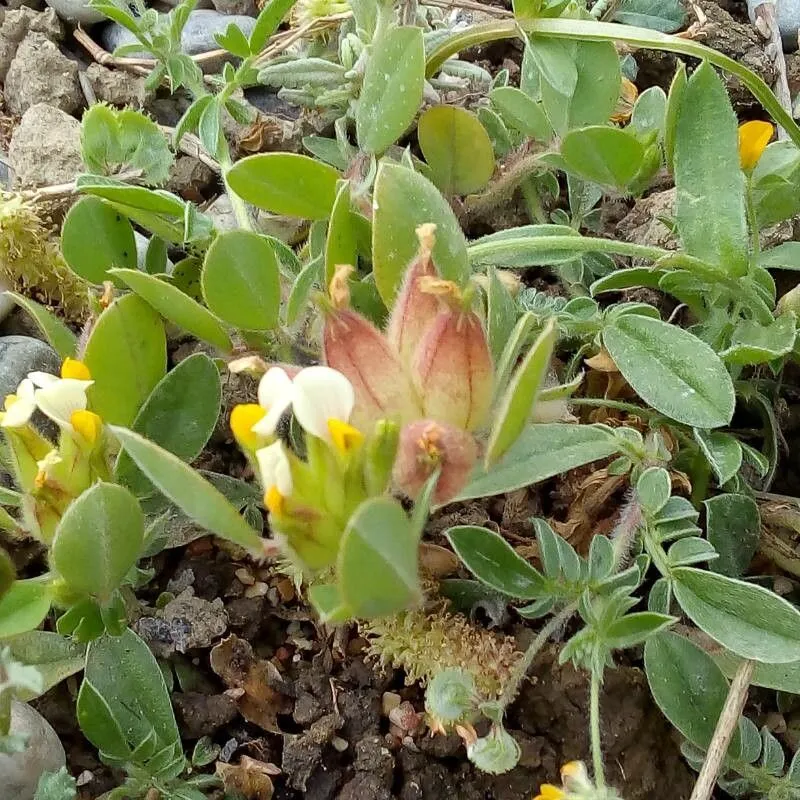
Author: (L.) Fourr.
Bibliography: Ann. Soc. Linn. Lyon, n.s., 16: 359 (1868)
Year: 1868
Status: accepted
Rank: species
Genus: Tripodion
Vegetable: False
Observations: Medit.
Bladder vetch, scientifically known as Tripodion tetraphyllum, is a fascinating member of the Fabaceae family. This leguminous plant is notable for its unique morphology and adaptation to the Mediterranean climate where it predominantly thrives.
First described in the 19th century, Tripodion tetraphyllum was formally documented in the Annals of the Société Linnéenne de Lyon in the year 1868, thanks to the efforts of the botanist Fourr. His meticulous observations and classification laid the groundwork for our current understanding of this species.
Bladder vetch is characterized by its distinctive bladder-like pods, which are an essential identifier for plant enthusiasts and botanists alike. These pods, along with the plant’s compound leaves typically composed of four leaflets, contribute to its scientific nomenclature and common name. This morphological trait not only aids in identification but also plays a role in the plant’s reproductive strategy, ensuring the dispersion of seeds across its natural habitat.
As a Mediterranean native, Tripodion tetraphyllum is well-adapted to the seasonal rhythms of this region. It flourishes in environments that experience mild, wet winters and hot, dry summers, a climatic condition that shapes much of its life cycle and growth patterns. Its resilience and adaptability make it an interesting subject for studies on plant ecology and environmental adaptation.
The significance of Tripodion tetraphyllum extends beyond its botanical intrigue. As a member of the Fabaceae family, it contributes to soil health through nitrogen fixation, a process in which nitrogen from the atmosphere is converted into a form that plants can use for growth. This ecological service supports the nutrient cycles within its ecosystem, benefiting surrounding flora and contributing to the overall biodiversity of its habitat.
Bladder vetch thus stands as an exemplary species within its genus, offering insights into plant resilience, adaptation, and ecological interdependence within the Mediterranean biome. Its enduring presence across its native range underscores the importance of conservation efforts to protect such unique and beneficial species for future generations to study and appreciate.
Swe: blåsgetväppling
En: Bladder Vetch
Ca: Fisantil·lis
Fr: Anthyllide à quatre feuilles, Anthyllis à quatre feuilles
De: Blasen-Wundklee
He: שלחופן קרומי
It: Vulneraria annuale
Es: Llentia silvestre
Sv: Blåsgetväppling
: Annual kidney vetch
© copyright of the Board of Trustees of the Royal Botanic Gardens, Kew.
© copyright of the Board of Trustees of the Royal Botanic Gardens, Kew.
© copyright of the Board of Trustees of the Royal Botanic Gardens, Kew.
Taken May 23, 2017 by Tela Botanica − Genevieve BOTTI (cc-by-sa)
Taken Apr 22, 2022 by Rosalia Pavia (cc-by-sa)
Taken Apr 23, 2019 by iannizzotto michele (cc-by-sa)
Taken Mar 23, 2020 by Farid benmessaoud (cc-by-sa)
Taken Jun 3, 2018 by Vidal Merino (cc-by-sa)
Taken Mar 21, 2021 by fatih iliass (cc-by-sa)
Taken Apr 19, 2019 by Jesus Toledano (cc-by-sa)
Taken Apr 18, 2013 by Tela Botanica − Yoan MARTIN (cc-by-sa)
Taken Apr 18, 2013 by Tela Botanica − Yoan MARTIN (cc-by-sa)
Taken Apr 22, 2022 by Rosalia Pavia (cc-by-sa)
Taken May 25, 2012 by Tela Botanica − Geneviève Botti (cc-by-sa)
Taken Apr 10, 2011 by Tela Botanica − Patrick LEBOULENGER (cc-by-sa)
Taken Apr 23, 2016 by Tela Botanica − Genevieve BOTTI (cc-by-sa)
Taken Apr 22, 2022 by Rosalia Pavia (cc-by-sa)
Taken Apr 22, 2022 by Rosalia Pavia (cc-by-sa)
Taken Jun 4, 2013 by Daniel Barthelemy (cc-by-nc)
Taken Jun 4, 2013 by Daniel Barthelemy (cc-by-nc)
Taken Apr 17, 2022 by Sylvain Piry (cc-by-sa)
Taken Jun 4, 2013 by Daniel Barthelemy (cc-by-nc)
Taken Jun 4, 2013 by Daniel Barthelemy (cc-by-nc)
Taken Apr 23, 2016 by Tela Botanica − Liliane ROUBAUDI (cc-by-sa)
Taken Apr 28, 2014 by Tela Botanica − Liliane Roubaudi (cc-by-sa)
Taken May 26, 2012 by Tela Botanica − Geneviève Botti (cc-by-sa)
Taken Jun 1, 2020 by Llandrich anna (cc-by-sa)
Taken Jun 1, 2020 by Llandrich anna (cc-by-sa)
Taken Apr 14, 2020 by Karim BOUDANI (cc-by-sa)
Taken Jun 1, 2012 by Martin Bishop (cc-by-sa)
Taken Jun 1, 2020 by Llandrich anna (cc-by-sa)
Ph maximum: 8.0
Ph minimum: 7.5
Light: 8
Atmospheric humidity: 3
Bloom months: [‘apr’, ‘may’, ‘jun’, ‘jul’]
Soil nutriments: 6
Family: Myrtaceae Author: (F.Muell.) K.D.Hill & L.A.S.Johnson Bibliography: Telopea 6: 402 (1995) Year: 1995 Status:…
Family: Rubiaceae Author: Pierre ex A.Froehner Bibliography: Notizbl. Bot. Gart. Berlin-Dahlem 1: 237 (1897) Year:…
Family: Sapindaceae Author: Koidz. Bibliography: J. Coll. Sci. Imp. Univ. Tokyo 32(1): 38 (1911) Year:…
Family: Asteraceae Author: A.Gray Bibliography: Pacif. Railr. Rep.: 107 (1857) Year: 1857 Status: accepted Rank:…
Family: Fabaceae Author: Medik. Bibliography: Vorles. Churpfälz. Phys.-Ökon. Ges. 2: 398 (1787) Year: 1787 Status:…
Family: Aspleniaceae Author: (Cav.) Alston Bibliography: Bull. Misc. Inform. Kew 1932: 309 (1932) Year: 1932…